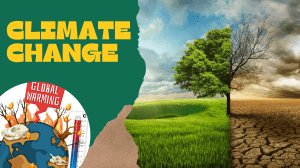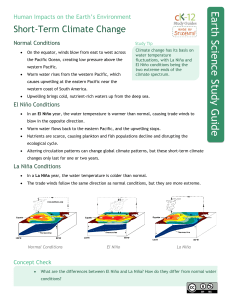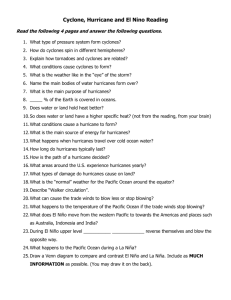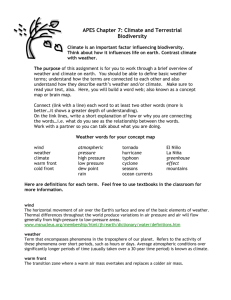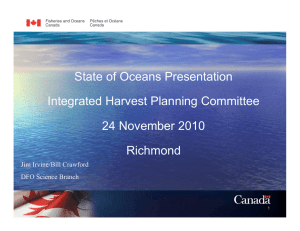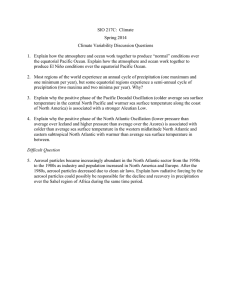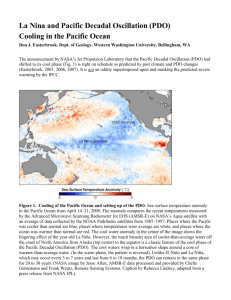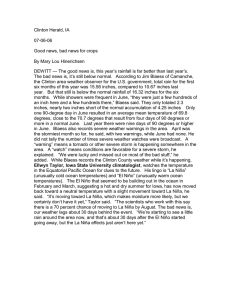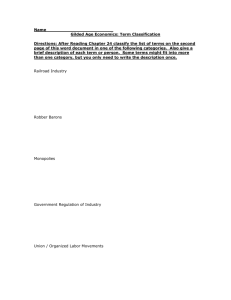Winds vs. Currents: Winds are named for the direction from which
advertisement
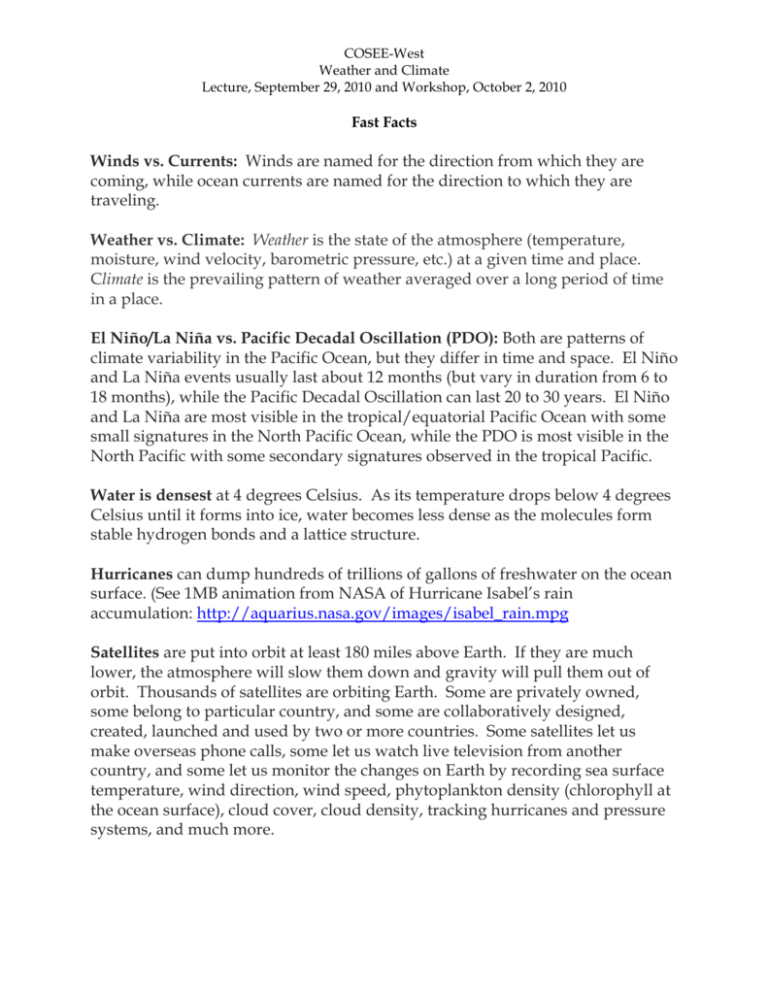
COSEE-West Weather and Climate Lecture, September 29, 2010 and Workshop, October 2, 2010 Fast Facts Winds vs. Currents: Winds are named for the direction from which they are coming, while ocean currents are named for the direction to which they are traveling. Weather vs. Climate: Weather is the state of the atmosphere (temperature, moisture, wind velocity, barometric pressure, etc.) at a given time and place. Climate is the prevailing pattern of weather averaged over a long period of time in a place. El Niño/La Niña vs. Pacific Decadal Oscillation (PDO): Both are patterns of climate variability in the Pacific Ocean, but they differ in time and space. El Niño and La Niña events usually last about 12 months (but vary in duration from 6 to 18 months), while the Pacific Decadal Oscillation can last 20 to 30 years. El Niño and La Niña are most visible in the tropical/equatorial Pacific Ocean with some small signatures in the North Pacific Ocean, while the PDO is most visible in the North Pacific with some secondary signatures observed in the tropical Pacific. Water is densest at 4 degrees Celsius. As its temperature drops below 4 degrees Celsius until it forms into ice, water becomes less dense as the molecules form stable hydrogen bonds and a lattice structure. Hurricanes can dump hundreds of trillions of gallons of freshwater on the ocean surface. (See 1MB animation from NASA of Hurricane Isabel’s rain accumulation: http://aquarius.nasa.gov/images/isabel_rain.mpg Satellites are put into orbit at least 180 miles above Earth. If they are much lower, the atmosphere will slow them down and gravity will pull them out of orbit. Thousands of satellites are orbiting Earth. Some are privately owned, some belong to particular country, and some are collaboratively designed, created, launched and used by two or more countries. Some satellites let us make overseas phone calls, some let us watch live television from another country, and some let us monitor the changes on Earth by recording sea surface temperature, wind direction, wind speed, phytoplankton density (chlorophyll at the ocean surface), cloud cover, cloud density, tracking hurricanes and pressure systems, and much more.
